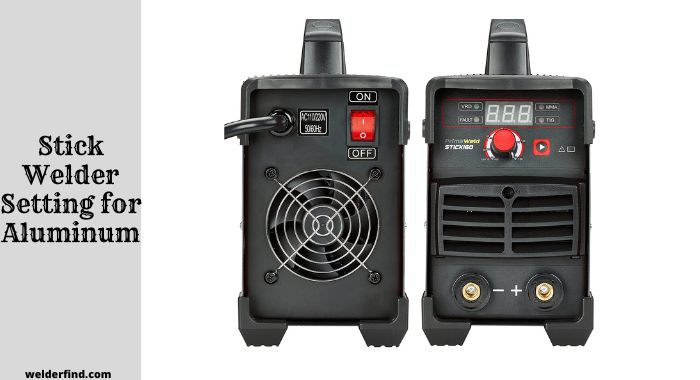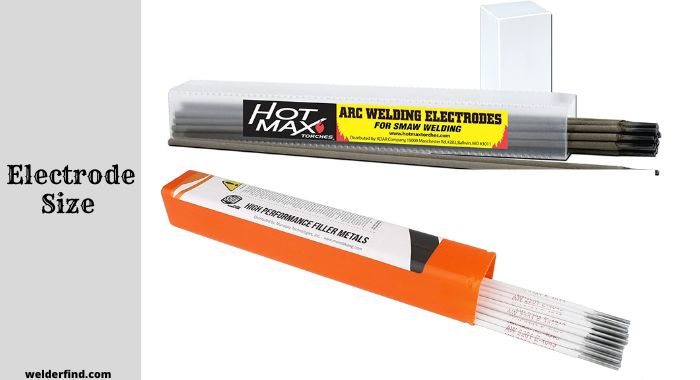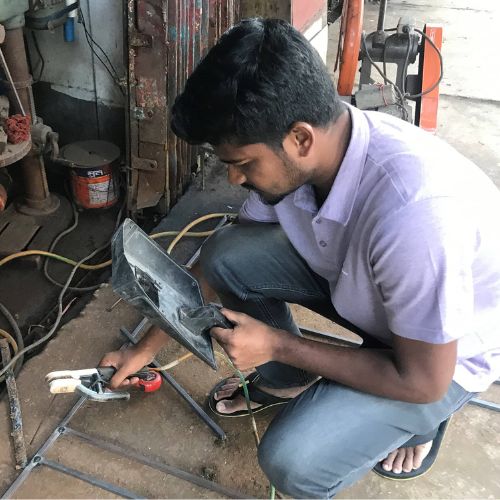Aluminum welding isn’t child’s play, especially when you want to weld it through stick welders. Chances are you’ll end up with cracks or inappropriate welds if you’re unfamiliar with the stick welding aluminum settings.
So let’s find out the common parts of your stick welding machine and their basic characteristics.
Stick Welder Setting for Aluminum

Without more chit-chat, let me describe the settings of a stick welder, including the necessary components and their basic importance.
Input Voltage
If you’ve at least a basic knowledge of welding, then you must know that aluminum is a little tricky to weld. Because it usually requires relatively more heat compared to mild steel. The minimum thickness can be around 14-16 ga.
In this case, the input voltage range should be around 10 to 50 volts for the best outcomes. That’s the ideal range suggested by seasoned welders, as stick welding needs a higher current than the MIG.
Electrode Size

Indeed, welders often get confused when selecting the right electrode, as there are multiple options.
For stick welding aluminum, there is not a single best size you may pick up, as each has its own specialties, pros, and cons. Depending on the amp, you must get the right one that matches your desired projects.
Let’s check out the chart below to get detailed knowledge –
| Electrode’s Sizes | Ideal Amp Range |
| 4.8 mm (3/16 inches) | 130 to 200 amperage |
| 4.0 mm (5/32 inches) | 100 to 160 amperage |
| 3.2 mm (1/8 inches ) | 70 to 120 amperage |
| 2.4 mm (3/32 inches ) | 50 to 80 amperage |
Selecting Amperage
This step might break your sweat because choosing the wrong amp might ruin the whole task. Depending on the rod thickness, you’ll need to choose the right amperage. Furthermore, considering the joint design, welding position, and temperature of the workpiece are equally necessary.
As a rule of thumb, you can settle the amperage rate as lower as possible if the workpiece appears to be preheated. And for room temperature, it’s okay to set the amperage at a mediocre level.
Frequency
Frequency matters, as it minimizes arc wandering and stabilizes the arc as much as possible. More importantly, frequency offers an ideal directional control needed, allowing you to perform aluminum welding in the best way possible.
Talking about the range, from 120Hz – 200Hz delivers an optimal frequency range to most aluminum welders. And you won’t need to cross the max rate I’ve mentioned to get the most out of it.
Feeding Speed
The feeding rate refers to m/min or in/min. According to pro welders, the feed and burn rates should be equal for appropriate welding. But when it comes down to aluminum welding, the speed should be around 2x faster than the steel rods.
Conversion Line Adapter
This single tool will play a key role in converting your TIG welder into a stick welding machine
. Although it’s an optional piece of stuff, you can make the best use of it when you have a Tig welding machine yet want to transform it into a stick welder for welding aluminum, steel, or welding other metals.
Ground Clamp
In the fewest possible words, a ground clamp is known as a welding circuit that assists in connecting the workpiece to the ground cable. It also helps the ground cable to stay firmly in a specific place so that you can continue aluminum welding without any obstacles.
While stick welding aluminum, you must utilize the ground clamp properly so that the welder’s plug doesn’t get into contact with the workstation.
Plug
Hands down, a plug is one of the key components which create the electrical connection between your welding machine and the power socket.
Usually, a welder plug features a 3-prong and gets the ability to withstand lower to higher amperages, as well as higher voltage.
Do You Use AC or DC to Weld Aluminum?
Particularly for TIG welding, DC, aka direct current, is an absolute choice as it aids in penetrating deeply. In contrast, AC, or alternating current, tends to be suitable for welding aluminum because its (+) half cycle offers cleaning, and (-) half-cycle offers deep penetration simultaneously.
Last Words
Getting familiar with the stick welding aluminum settings is mandatory, especially if you’re new in the field of welding.
Ensure to make the best use of your welding machine, following the correct instructions. Also, take suggestions from experts before you start aluminum welding, as it is relatively tricky.
